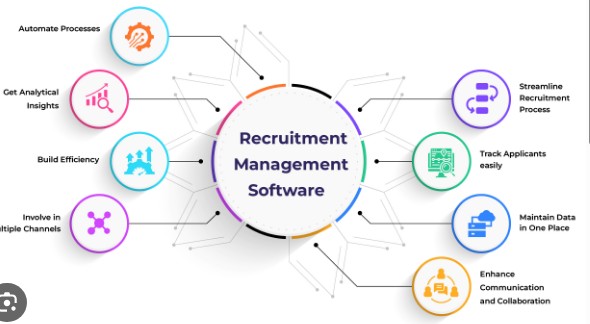Understanding SOX 404: An Overview CPE conferences

The Sarbanes-Oxley Act of 2002 (SOX) introduced sweeping changes to financial regulation and corporate governance in response to major accounting scandals such as Enron, WorldCom, and Tyco. Among its most impactful provisions is Section 404, commonly referred to as SOX 404. This section has had lasting implications for how public companies in the United States manage, test, and report on internal controls over financial reporting (ICFR).
In this article, we’ll take a look into SOX 404, what it is, why it matters, and how CPAs can stay on top of what they need to know with CPE conferences.
What Is SOX 404?
SOX 404 mandates that publicly traded companies establish and maintain an adequate internal control structure and procedures for financial reporting. Furthermore, it requires an annual assessment of the effectiveness of these controls—both by management and an external auditor (for larger companies).
SOX 404 is divided into two major parts:
- SOX 404(a): Management’s assessment of internal controls.
- SOX 404(b): Independent auditor’s attestation of management’s assessment.
SOX 404(a): Management’s Responsibilities
Section 404(a) applies to all public companies and requires executive management (typically the CEO and CFO) to:
- Design and implement internal controls that ensure accurate financial reporting.
- Evaluate the effectiveness of these controls on an annual basis.
- Disclose any material weaknesses in internal controls in their annual filings (Form 10-K).
The evaluation must be based on a recognized control framework, such as the COSO Internal Control–Integrated Framework, which outlines five core components of internal control:
- Control Environment
- Risk Assessment
- Control Activities
- Information and Communication
- Monitoring
Failure to disclose weaknesses—or providing false certifications—can lead to civil and criminal penalties for the executives involved.
SOX 404(b): External Auditor’s Attestation
Section 404(b) requires an independent registered public accounting firm to attest to and report on the effectiveness of the company’s ICFR. This requirement only applies to accelerated filers and large accelerated filers, defined as follows:
- Accelerated Filer: Public float of $75 million to less than $700 million.
- Large Accelerated Filer: Public float of $700 million or more.
Smaller reporting companies (SRCs) and emerging growth companies (EGCs) are exempt from 404(b), although they must still comply with 404(a).
Purpose and Significance of SOX 404
The core goal of SOX 404 is to increase the accuracy, reliability, and transparency of financial statements by ensuring that internal controls are effective. The legislation aims to:
- Restore investor confidence.
- Reduce the risk of accounting fraud.
- Hold executives accountable.
- Improve corporate governance.
- Encourage stronger risk management practices.
SOX 404 has also led to a more disciplined approach to internal controls, forcing companies to document, assess, and improve their systems.
Internal Control Deficiencies: Definitions
SOX 404 outlines different levels of control issues:
- Control Deficiency: A control is missing or not operating effectively.
- Significant Deficiency: Less severe than a material weakness but important enough to merit attention by those responsible for oversight.
- Material Weakness: A deficiency or combination of deficiencies that raises a reasonable possibility that a material misstatement of financial statements will not be prevented or detected.
Only material weaknesses must be disclosed publicly.
Technology’s Role in SOX 404
Modern compliance efforts often leverage Governance, Risk, and Compliance (GRC) software tools to:
- Automate control testing
- Track remediation efforts
- Document control activities
- Maintain audit trails
- Support real-time dashboards and alerts
Leading platforms like Workiva, AuditBoard, and MetricStream help reduce the administrative burden and improve audit readiness.
SOX 404 and the COSO Framework
The COSO framework is considered the gold standard for internal control systems. It offers a principles-based approach that aligns well with SOX 404 compliance.
COSO’s five components and seventeen principles guide companies in:
- Establishing a control culture.
- Conducting ongoing risk assessments.
- Implementing and monitoring controls.
- Communicating responsibilities and results clearly.
Using COSO enables a more holistic and effective approach to internal control management.
CPE Conferences and More
SOX 404 remains a cornerstone of corporate accountability in the modern financial landscape. Though its implementation is complex, it has helped restore trust in the markets and raised the standard for transparency and control.
For public companies, and any firm preparing to go public, SOX 404 compliance is not just a regulatory requirement, but a signal to investors that the company takes financial reporting and governance seriously.
As regulatory scrutiny increases and stakeholders demand more transparency, mastering SOX 404 compliance is not just a necessity, it’s a competitive advantage. For CPAs, attending CPE conferences that cover this material is not only a great way to earn CPE credits, but will help you stay on top of all relevant information. Visit CPE Inc. now for more information on their available conferences for CPAs!
For more information about cpe cpa courses and texas ethics cpe course Please visit : CPE Inc.











